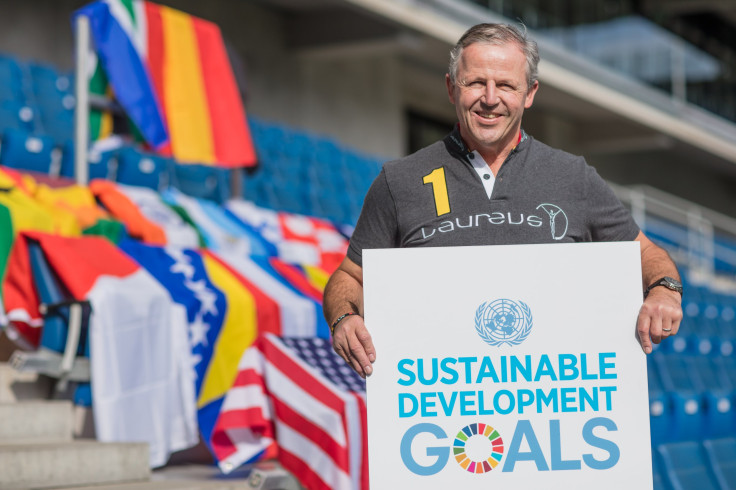Why US Shortfalls In Sustainable Development Goals Hurt Businesses

The 2030 Agenda for Sustainable Development comprises 17 goals that focus on improving the livelihood of individuals and living conditions across the planet, as well as protecting the planet itself. Some developed nations, such as Brazil, Mexico, and Italy, were recognized for having scored highly for their exemplary institutionalization efforts to reach the sustainable development goals, or SDGs. But among the G20 countries striving to reach the goals, the United States scored the lowest, trailing behind Russia and Saudi Arabia.
While it’s clear that the U.S. is not doing as well as other nations in regard to sustainable development, many don’t realize that the country’s failure to reach these goals negatively impacts businesses at home and abroad. Below, I discuss three specific SDGs where the U.S. has scored weakly and show how this poor performance affects businesses and the economy worldwide.
Goal: “Achieve gender equality and empower all women and girls”
While no country achieved “role model” status (the highest level attainable) for this SDG in 2018, the U.S. was alongside five other countries that ranked “highly insufficient,” the second-to-worst ranking. According to the American Association of University Women (AAUW), women’s median annual earnings are 80 percent of men’s earnings in the U.S. Women frequently earn much less than their male counterparts in commonly lucrative fields, such as finance, medicine, accounting, and law.
Beyond earning potential, women face more gender discrimination and sexual harassment at work, according to findings from the Pew Research Center. The lack of work opportunities, as well as the lack of equal treatment in and outside of the workplace, hinders the economic and business growth of a country whose population is comprised of more than 50 percent women and whose example could help improve gender equality abroad.
Goal: “Take urgent action to combat climate change and its impacts”
Not only has the United States not been urgent in its actions to combat climate change, but the country left the Paris climate accord in 2017, indicating that there might not be many U.S. “actions” at all. Even though the United States’ collective CO2 emissions in 2018 were lower than they were in 2005, according to the U.S. Energy Information Association, the country is still the second-largest producer of CO2 in the world, right behind China.
Plus, the Environmental Protection Agency’s 2019 budget is $6.12 billion, a $2.58 billion, or 23.2 percent, reduction from 2018, according to an EPA report. Not only is there skepticism or denial about climate change, but the United States now has more limited resources to combat it than in previous years.
The loose environmental restrictions can present new opportunities to some companies, but they also show the U.S. is not committed to investing in clean energy business initiatives that could increase jobs and improve the overall standing of the economy. Additionally, these pitfalls show that the U.S. is not focused on potential environmental problems that might prevent businesses from operating in the future.
Goal: “Ensure sustainable consumption and production patterns”
This SDG may sound similar to addressing concerns about the environment and climate change, but it is more specifically focused on ensuring a country is striving toward an equitable balance of resources, providing access to basic services and opportunities, and that there is a sustainable infrastructure to hold these production and consumption processes.
In the context of resources alone, the United States is using more than a quarter of the world’s natural gas, despite constituting less than 5 percent of the global population, according to the Worldwatch Institute. The U.S.’ raw material consumption, which includes food, “rose 3.15 times more than the population from 1910 to 2014,” while the use of renewable materials dipped from 41 percent to 5 percent over the last century, according to the University of Michigan Center for Sustainable Systems.
The United States’ overall shift away from renewable resources spells trouble for businesses at home and abroad, as the country does not have the necessary economic or material infrastructure in place in the event these raw resources are not as quickly available.
The United States still has time to improve
No G20 country received perfect marks on its SDG scorecard, and nations still have more than 10 years to achieve their sustainable development goals. For the United States — a nation that dedicates the most foreign aid, even if it’s just a small percentage of its total GDP — the remedy to its SDG failures isn’t necessarily more capital or resources but a stronger balance and distribution of its current efforts. With that balance, industries and businesses can thrive as the country rededicates itself to progress.
Jenny Darroch, Ph.D., is the Henry Y. Hwang Dean of the Drucker School of Management at Claremont Graduate University and professor in the Master’s in Marketing Analytics Online program.
© Copyright IBTimes 2024. All rights reserved.











